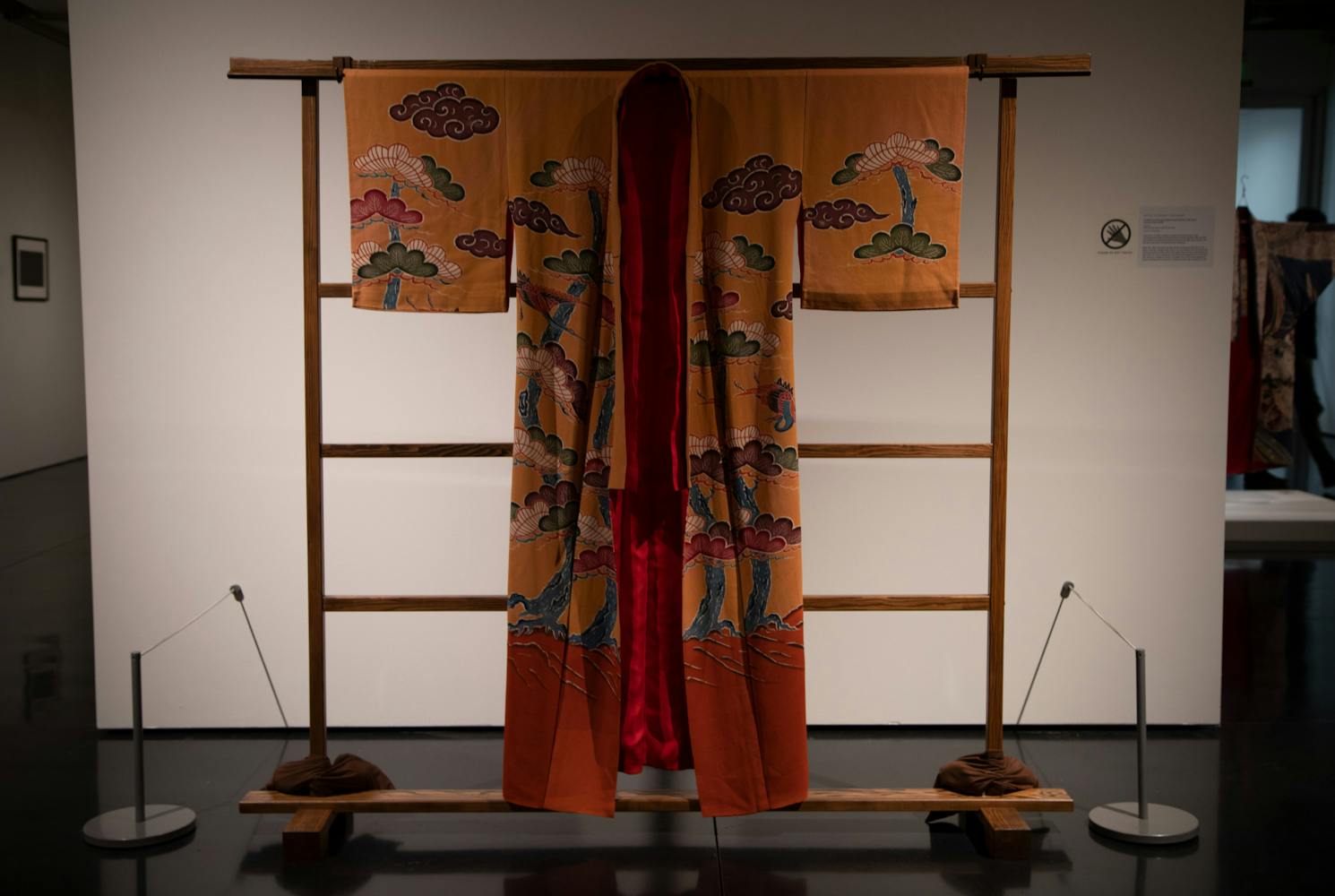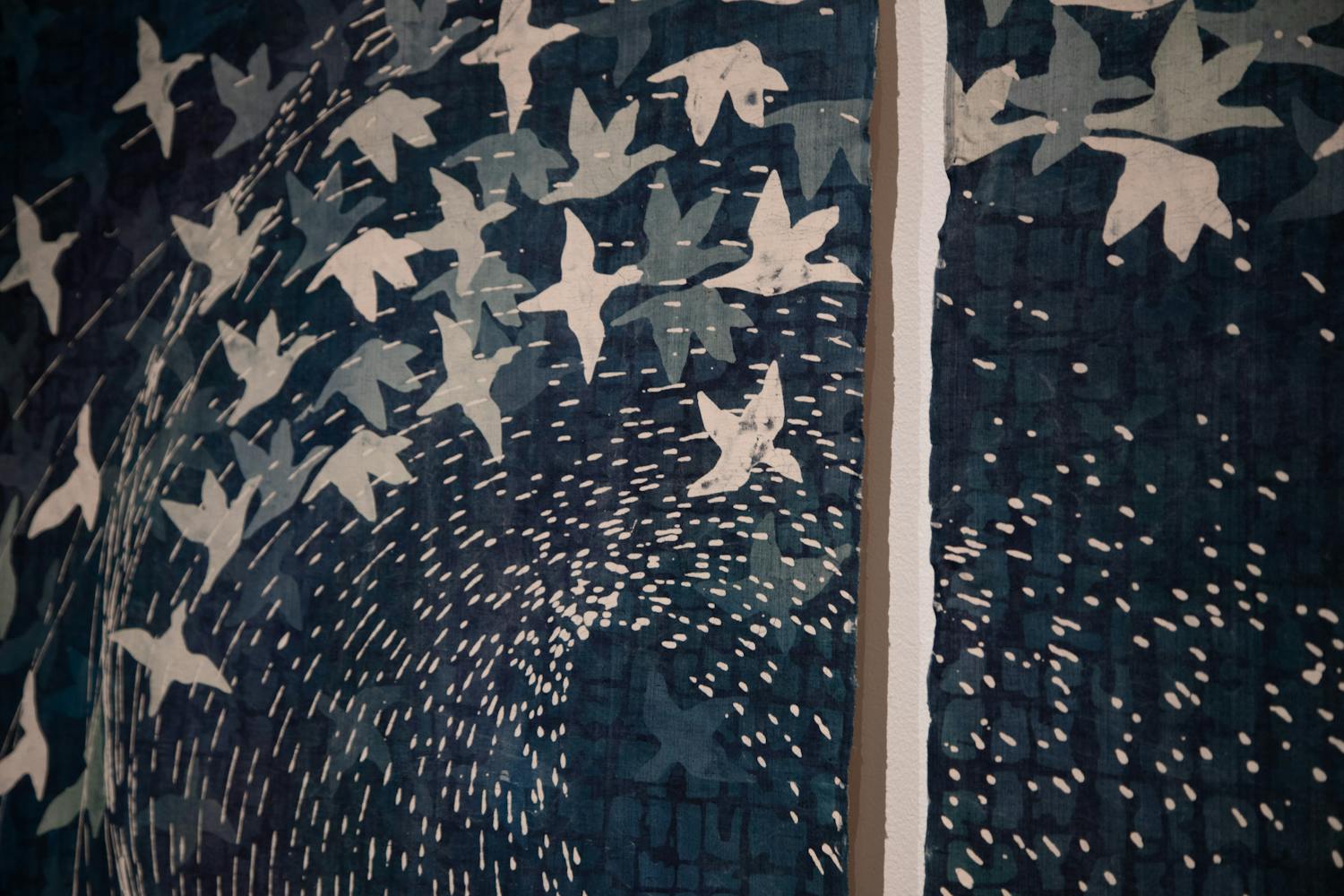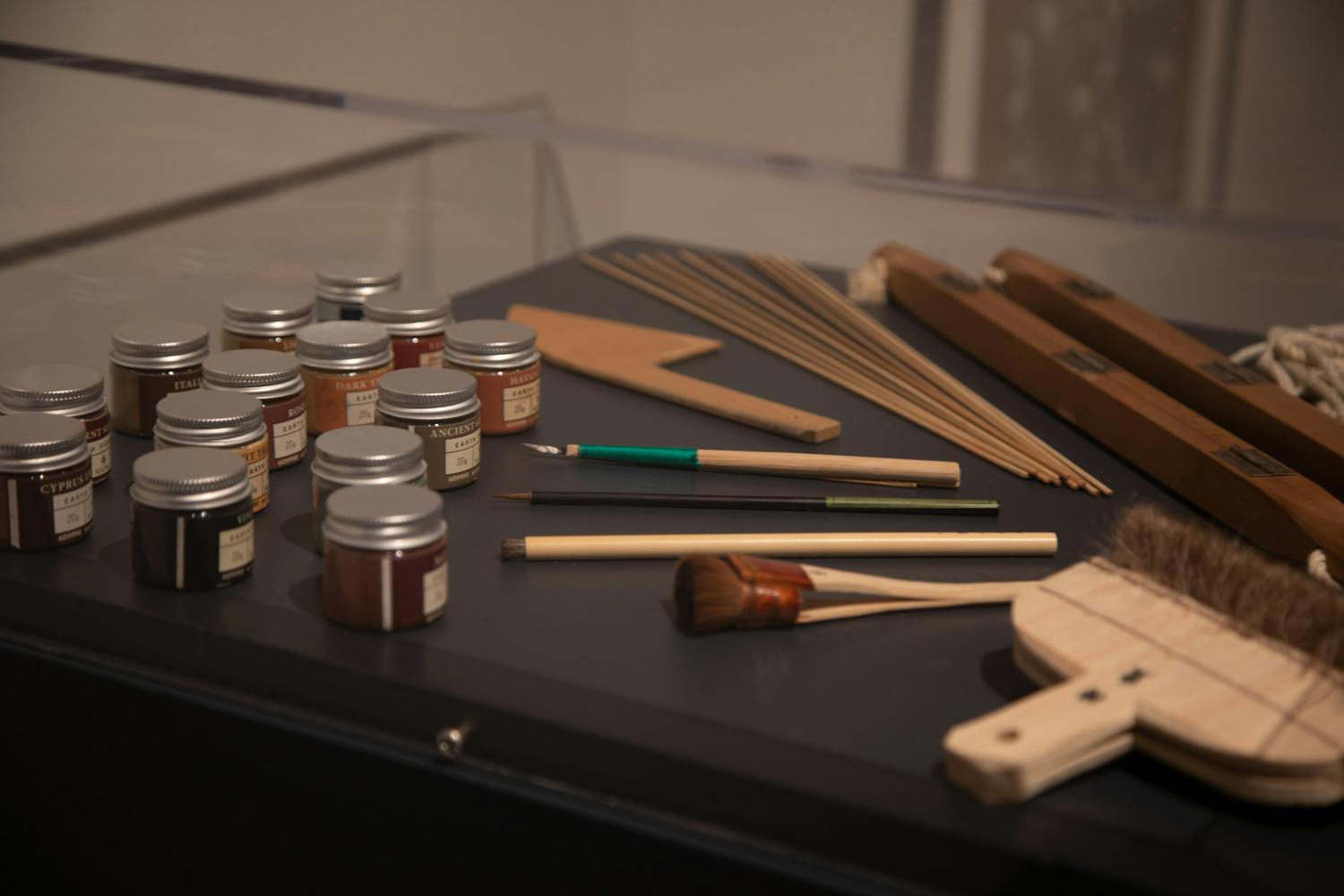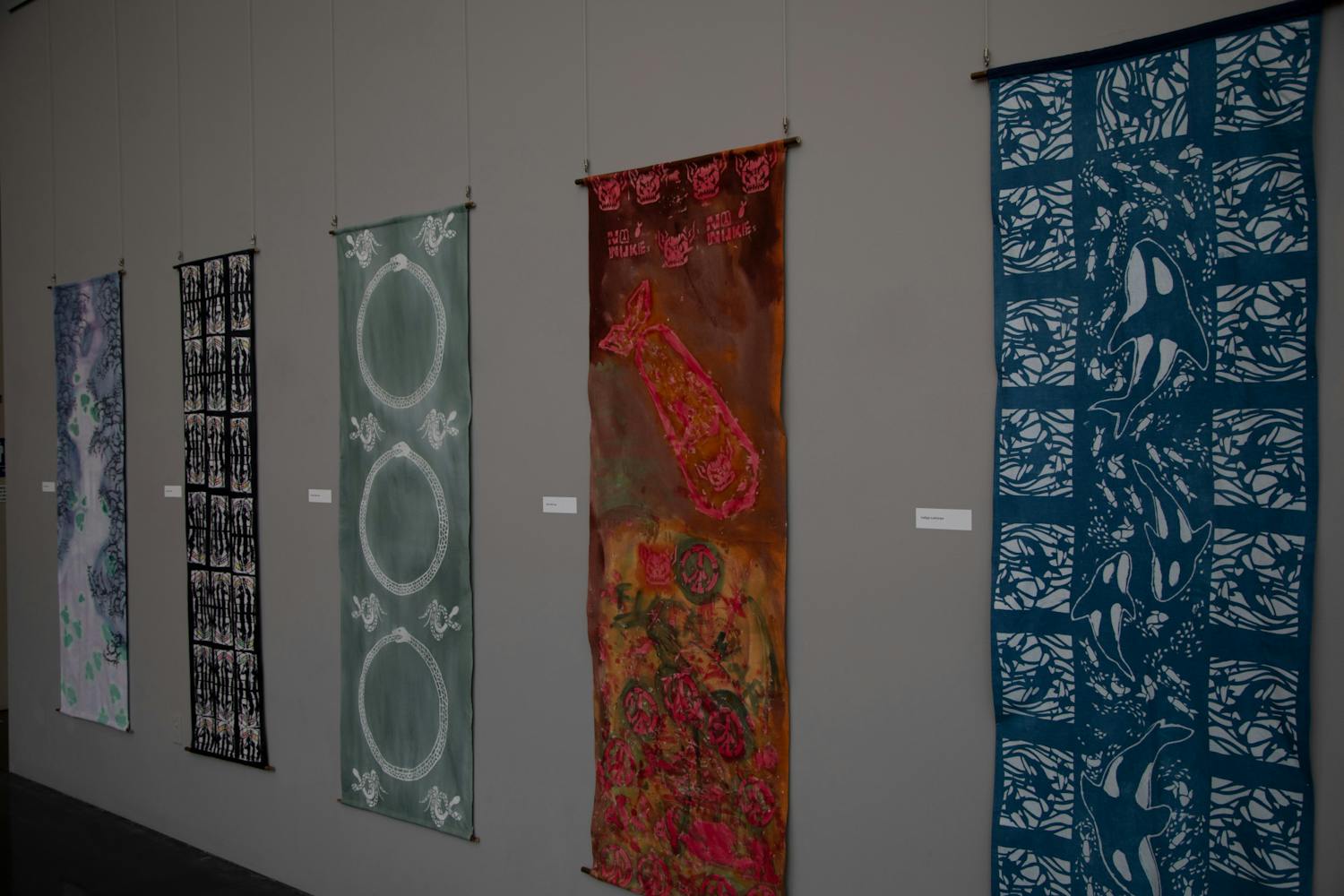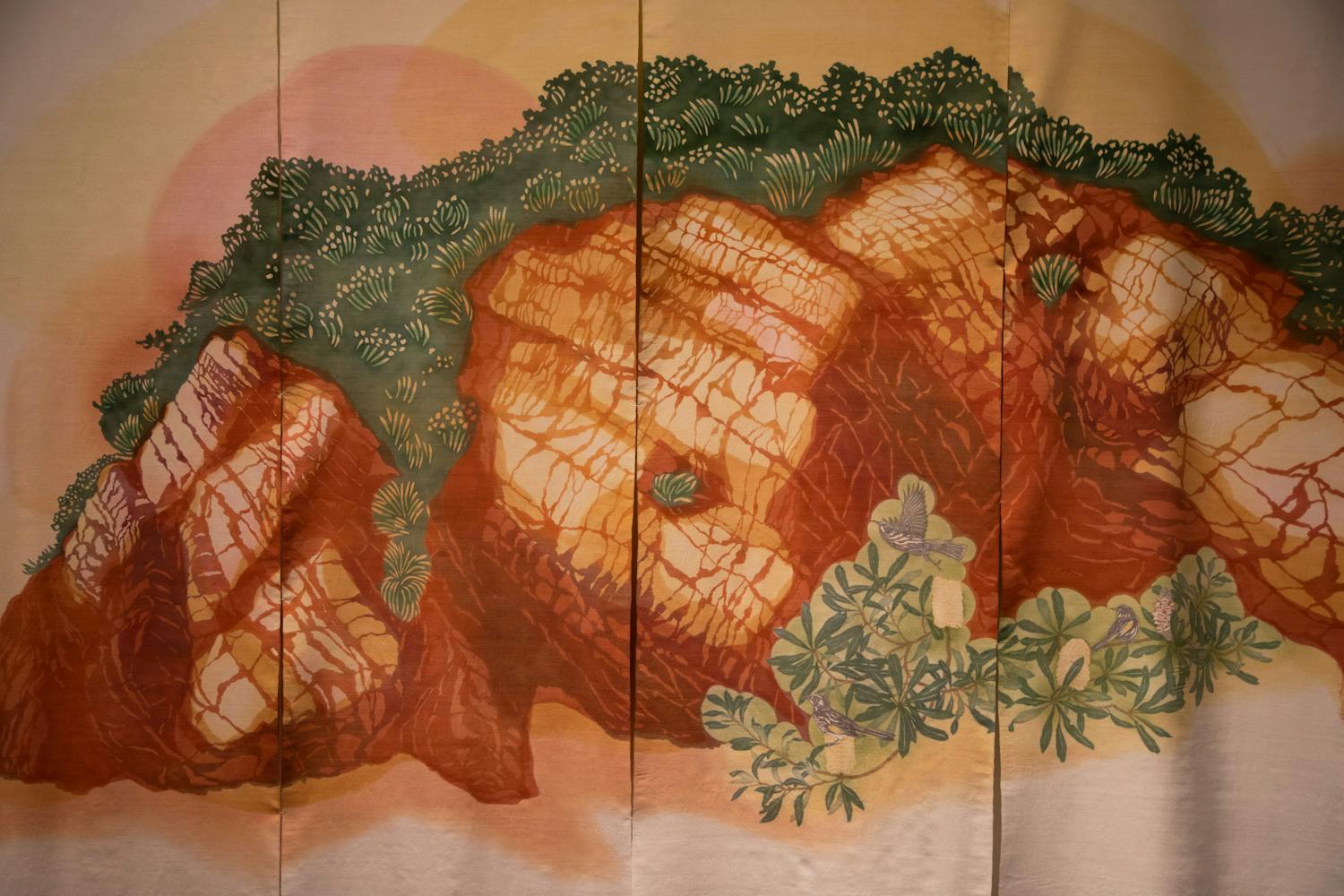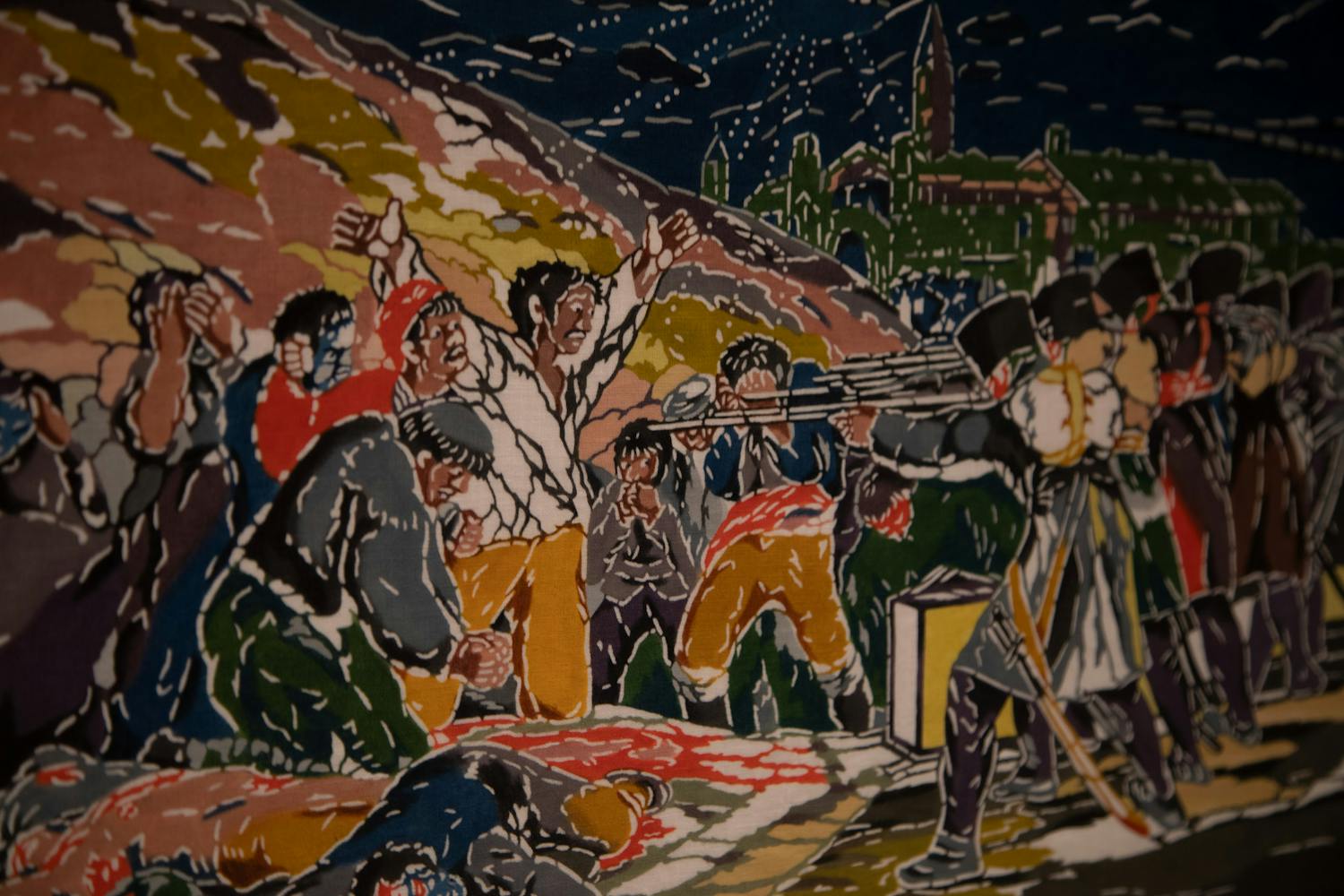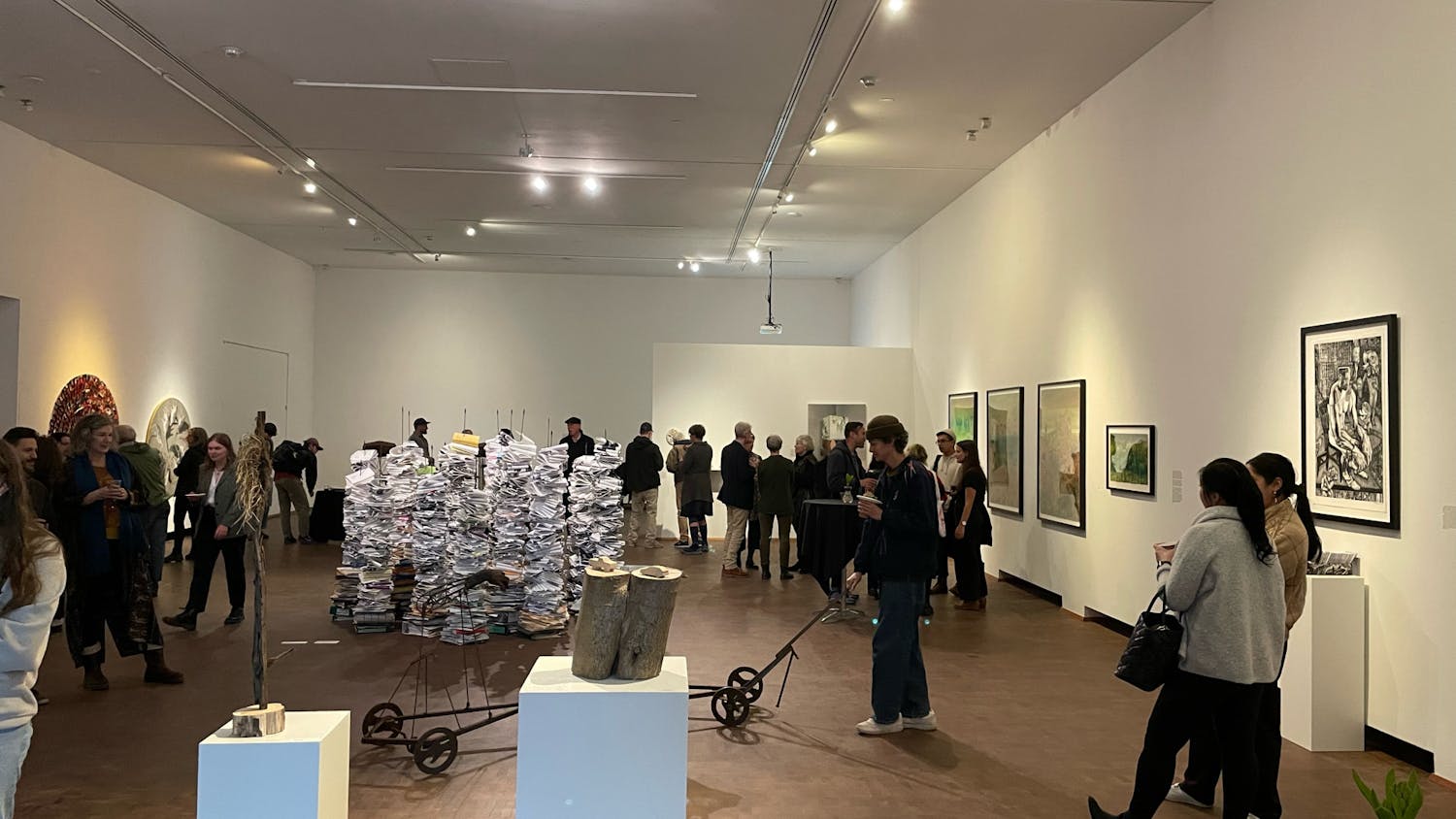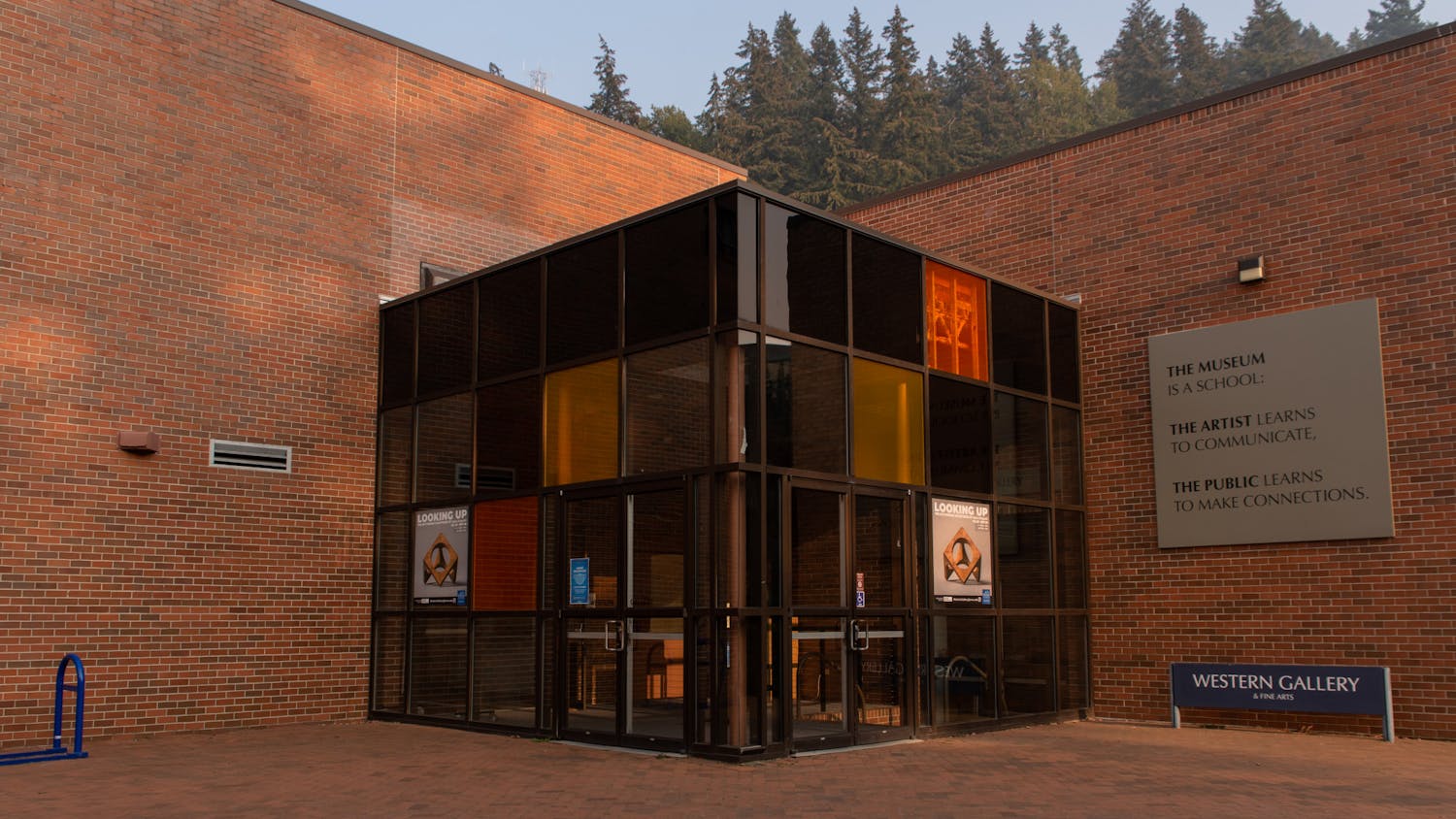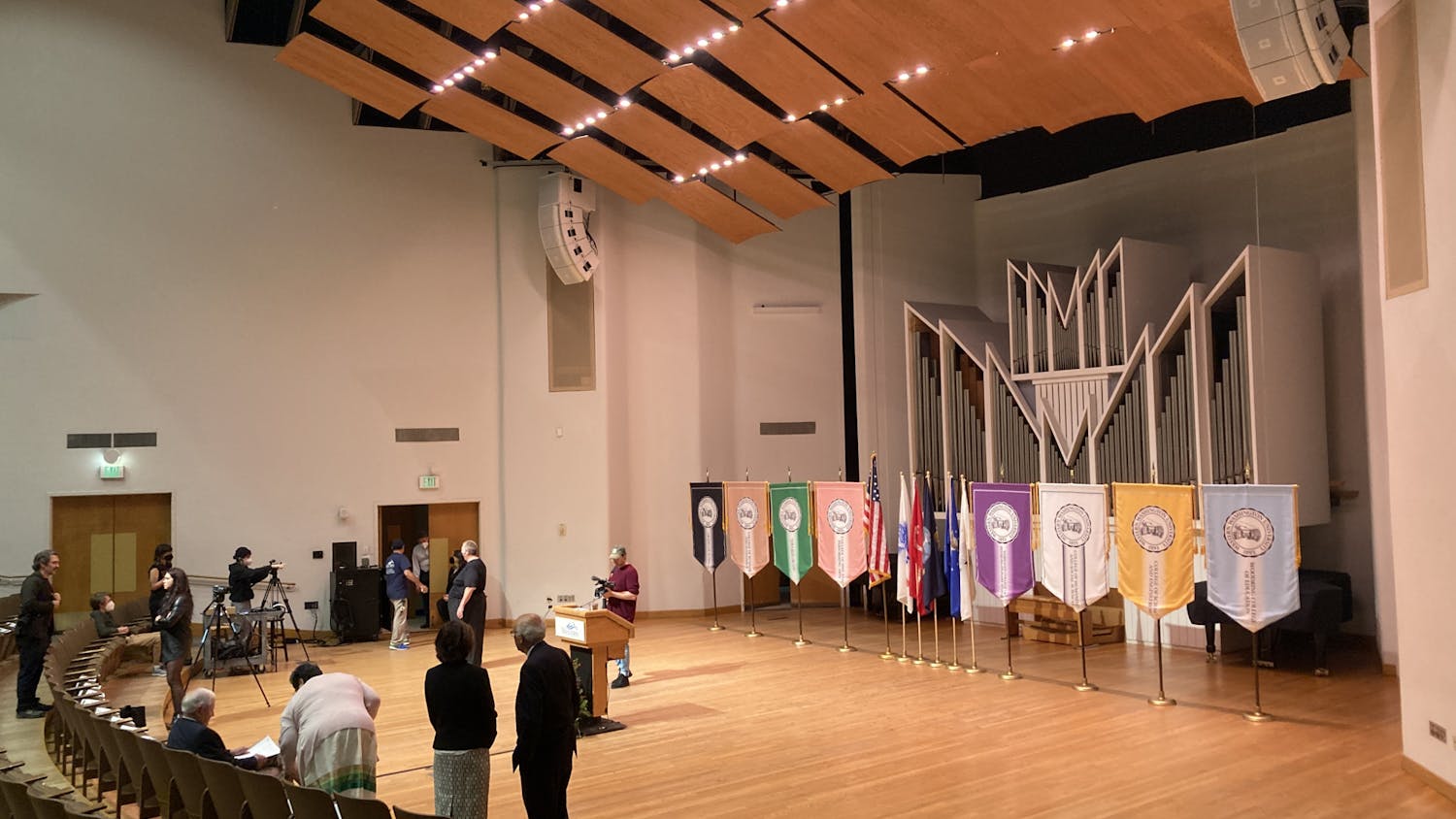The latest exhibit at the Whatcom Museum showcases one of Japan’s many textile-dyeing methods for the public to view until June 11. “Katazome Today: Migrations of a Japanese Art” features works from nine different artists across the world, including Japan, Germany, Australia and right here on the West Coast.
According to Tyler Petersen from the Surface Design Association, katazome “utilizes a resist paste made from rice flour that is passed through stencils onto fabric.” Most of the materials are relatively easy to come by, but stencil paper is the most difficult to source since it’s only available in Japan.
The exhibit was a collaborative curation between Amy Chaloupka and Seiko Purdue.
Chaloupka, the curator of art for the Whatcom Museum, started curating after completing her undergraduate studies at Western Washington University and her graduate studies at the University of Wisconsin, where she focused on sculpture art.
Chaloupka says that the idea for this exhibit came from Purdue, a professor in the fibers and fabrics department at Western. One of the courses that Purdue teaches is centered around katazome, and overall her work focuses on connecting the art of the East with the art of the West.
Purdue said part of the reason for this exhibit is to inspire and teach the next generation about the traditional art form of katazome.
While there aren’t many people actively practicing katazome, that did not hinder Purdue’s ability to find artists to include in this exhibit. Several artists are featured in the exhibit along with their mentors.
One of the featured artists was Mika Toba, who taught Purdue and Melinda Heal, who both have work displayed in the museum.
“There was a nice serendipity to those connections,” Heal said.
Hailing from Canberra, Australia, much of Heal’s work is inspired by the Australian landscape surrounding her.
She received her undergraduate degree at the Australian National University, but not before she spent one year studying abroad in Kyoto, Japan. That year, she was introduced to katazome. She then studied for four years at Kyoto Seika University for her graduate degree.
“I just found it to be a really interesting, hands-on process and I enjoyed the way that the technique sort of dictated what you could and couldn’t do,” Heal said. “You had to work with the materials and tools or it wouldn’t work, but there were also ways to manipulate it and use it in new ways.”
“The Cliffs, they are breathing” is one of Heal’s pieces in the exhibit. Standing several feet tall, it is the biggest piece she’s made to date, featuring imagery of a bright orange craggily cliff face in Bermagui, Australia.
“They are a big, solid geological feature but have these delicate lines running through them that shows how the land has twisted and formed over time,” Heal said. “I wanted to use the large surface of the fabric to really showcase these forms and details.”
Heal found inspiration for many of her pieces in the Australian landscape because it’s what she’s most familiar with. The cross-cultural artwork combines depictions of the Australian landscape with a Japanese art form.
Heal is not the only artist in this exhibit who was inspired by their surroundings. Local artist Cheryl Lawrence created a piece that might resonate with anyone from Skagit County.
“Snowstorm” is a diptych that serves as the main image for the exhibit as a whole. It features snow geese flying around speckles of white, and it was inspired by the scenery and wildlife of the Skagit Valley.
“I did five or six different drawings of snow geese in flight and then used those to build up the design,” Lawrence said.
She went on to explain that the process to create the intricate layers was putting down a layer of the rice paste and then adding color, and repeating until she got the desired result. To achieve a speckled effect, she hung the bag of paste from a rope and swung it above the silk.
This show not only highlights local and non-local artists treasuring a traditional art form but also educates museum-goers about the history of katazome. Chaloupka says that many of her recent tours have averaged 60 to 70 attendees, compared to the usual 20 to 30 that she’s seen after the height of the COVID-19 pandemic.
“It was nice to be recognized as someone using katazome in an interesting contemporary way, especially since I was so far away, across the ocean,” Heal said. “I had a great experience being a part of this show.”
Aislinn Jones (she/her) is a city life reporter for The Front. She is a junior majoring in visual journalism with a concentration in art history, so her work often reflects her interest in art and/or music events. Outside of the newsroom, you can find her taking photos on her film camera or hammocking in the sun. You can reach her at aislinnjones.thefront@gmail.com.


